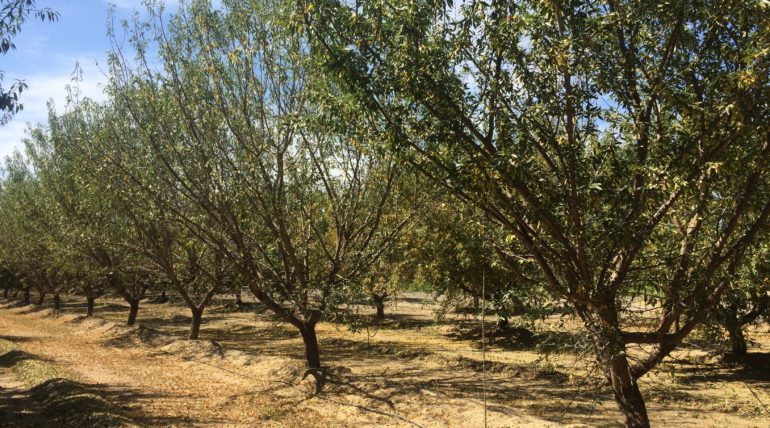Post-harvest Leaching Fractions to Manage Soil Salinity
Drought years are tough. Limited water supplies create several challenges that impact the current and future year’s crop. Several articles have been constructed to help manage almond orchards with limited water supplies, but as harvest starts, focus needs to shift to post-harvest management of the orchards. Many orchards relied on groundwater at some point through this year. This may have been sourced directly from a well on the property, or from wells within an irrigation district. Groundwater often contains elevated levels of salt, in particular sodium and chloride. These salts accumulate in the soil from the irrigations that occur during the season. Due to almond roots generally excluding salts, salt levels within the soil could climb as high as 10-15 times the concentration of the irrigation water within a single season. These higher levels of salt will impact growth and productivity as well as lead to tissue toxicity and leaf loss. To manage these salts, they need to be removed from the active rootzone of the tree. Salinity management for various soil types have been described previously for sandy and finer texture soils. These programs rely on winter leaching to reduce the salinity levels within the active rootzone of the tree. This process, however, can be improved by taking actions in the post-harvest to increase soil moisture levels. At this time of year, a leaching fraction should be added to each water applications to increase soil moisture levels. An increase of 15-20% of the irrigation duration should be sufficient. This additional water will refill the soil profile during this period, increasing the effectiveness of leaching by winter rains. The value of applying a leaching fraction in the post-harvest is greater than leaching fractions applied earlier in the season. This is due to the irrigation practices associated with harvest – a



Recent Comments